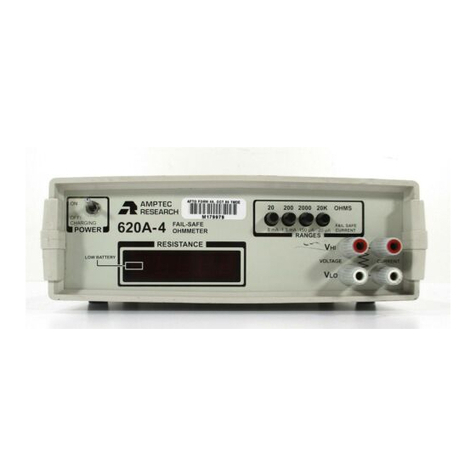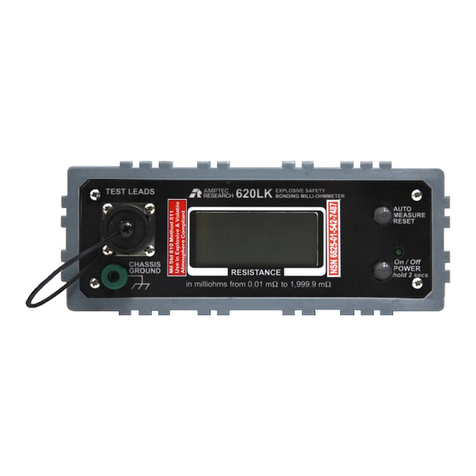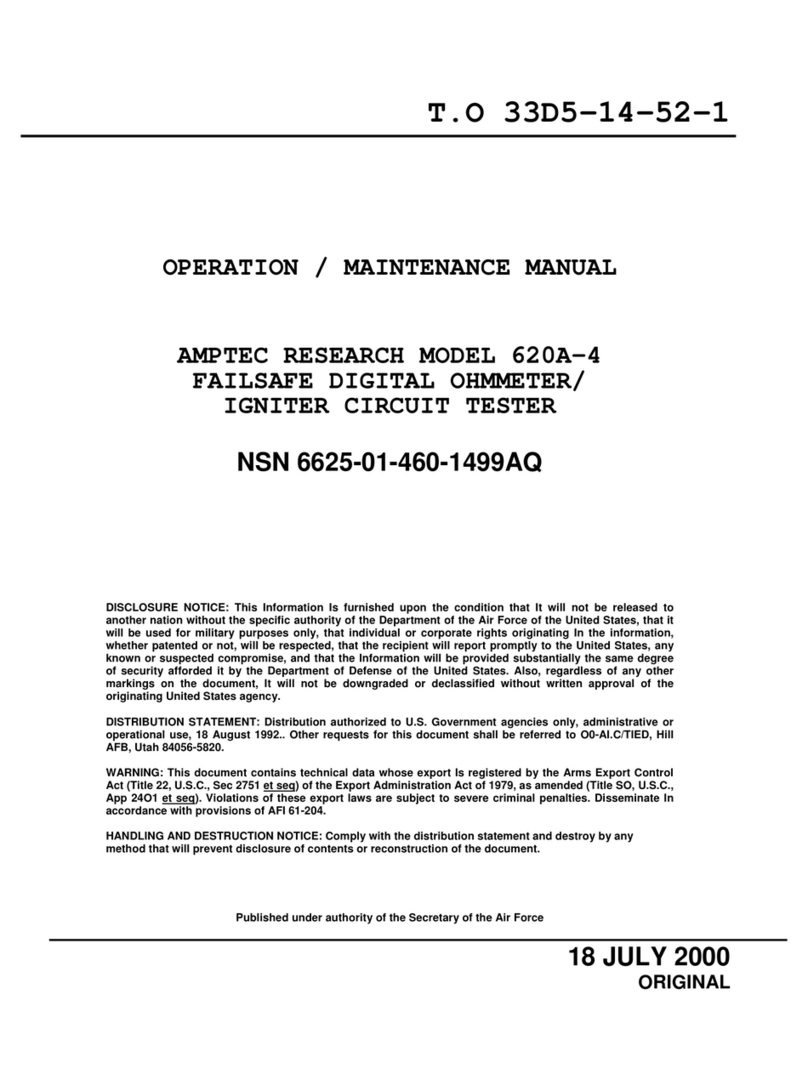
A-1. Introduction - AMPTEC 620UK
The AMPTEC 630, 640 and now the AMPTEC 620 Series Failsafe Ohmmeters have become the standard in the
Safety Ohmmeter/Igniter Circuit Test industry. They provide extremely safe and reliable resistance testing of
explosive or volatile devices. Safety Approvals from various Safety Boards include, the U.S. Air Force 620A-4 for
generic use on munitions and the 620UK by an independent European Eex
certifying body for Intrinsic Safety. The United Kingdom Ministry of Defense (UK MOD) and other versions also
have approved the 620UK Bonding Ohmmeter. Devices the AMPTEC 620UK Safety Bonding Ohmmeter may be
used on include: 1) chassis ground connections on fighter jets in Explosive and Volatile environments, 2) fuses,
3)squibs, 4) igniters, 5) explosive bolts, 6) rocket motor squibs, 7) flares 8) EED activated mortars, 9) EED activated
shells, 10) EED activated rounds and many others .
The
AMPTEC 620UK is approved by SIRA Test & Certification Limited for an intrinsic safety classification of
EEx ib IIC T4 in accordance with the ATEX Directive. SIRA Test & Certification Limited is located in
Chislehurtst, Kent BR7 5EH ENGLAND
A-3)
explosive ordnance and AMPTEC
The AMPTEC 620UK Ohmmeter complies with the EU ATEX
Directive and meets the Intrinsic Safety standard Eex-ib-IIc-T4. The AMPTEC 620UK Ohmmeter has passed
EMC testing in accordance with British Defence Standard 59-41Radiated Emissions and Susceptibility. It is also
complies with British Defence Standards 66-31 (Environmental Heat, Cold, Altitude, Humidity and Atmospheric
Stress tests), as well as British Defense Standard 07-85 and British Defense Standard 05-34. The AMPTEC
620UK Ohmmeter provides a reliable and intrinsically safe means of measuring electrical resistance of aircraft
chassis ground connections, rocket motor squibs, warhead squibs , explosive bridge wire and/on a variety of
devices. Featuring seven resistance ranges and an all metal case with a separate battery compartment, the AMPTEC
620UK provides a safe and easy method of measuring resistance in explosive and volatile atmospheres.
A-2. Unpacking, and Inspection
Should the AMPTEC shipping box appear damaged upon arrival notify the carrier
immediately. If the 620UK appears damaged, the carrier's agent should authorize repairs
before the unit is returned to the factory. Even if the instrument appears undamaged, it
may have suffered internal damage in transit that may not be evident.
R M A
SECTION A - RECEIVING AND INITIAL INSPECTION
4
The AMPTEC 620UK is a 2-wire ( 4 Wire Version Kelvin now available) failsafe digital ohmmeter which reliably
uses very low test currents for its resistance measure-ment. The open circuit voltage on the main “Test Lead”
connector (Pattern 104, 3 way NSN plug) is also diode protected (voltage clamped) and ideal for use in “volatile”
environments. The AMPTEC 620UK Explosive Safety Ohmmeter is voltage limited (diode protected) to prevent
arcing associated with the use of the meter. The field tested Failsafe Output Circuitry pioneered by AMPTEC
RESEARCH ensures that test current levels do not exceed the specified "failsafe current" even in a worst-case
component failure situation. To conserve battery power, the AMPTEC 620UK automatically shuts down, or turns
itself off after approx. 20 minutes of “inactivity”. The AMPTEC 620UK does not need to “warm-up”, so the user
may simply repress the power button to effectively reset the “auto-shutdown” timer. Should the internal batteries (4
ea. AA type) reach a low energy level the “LO BAT” indicator message will appear on the unit’s display. (see
Section



































